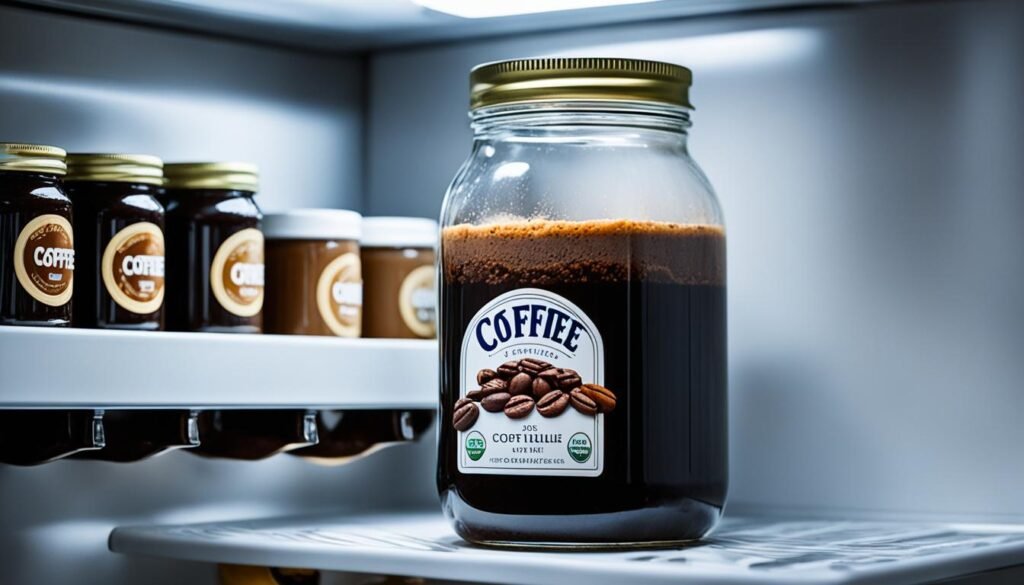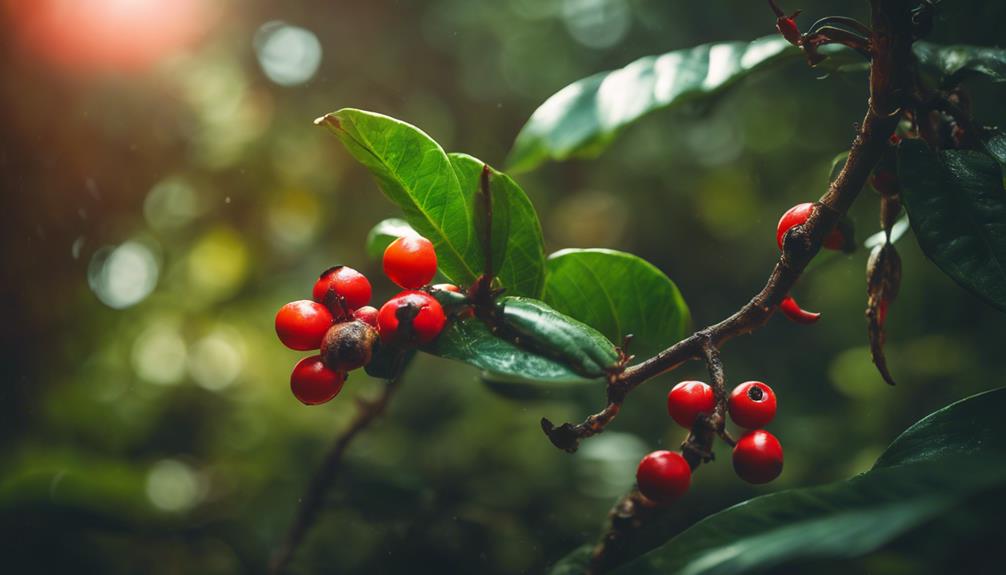Did you know the dairy industry accounts for about 4% of global greenhouse gas emissions? It’s easy to focus on meat alone when we talk about our environmental impact. But, we must not overlook milk. Thankfully, there are many eco-friendly milk options outside of traditional dairy. These choices help us enjoy our drinks with a lighter impact on the planet. They also support sustainable farming methods.
We’ll look at the top picks for eco-friendly milk in this series. We’ll consider key environmental aspects like water use, land efficiency, and greenhouse gases. This will help us choose milk that’s good for the Earth. Understanding these details lets us make choices that are eco-conscious.
Understanding the Impact of Dairy on the Environment
Dairy farming has a big impact on our planet. It affects the land, water, and air we all share. Many people are choosing plant-based options to lessen this impact.
Dairy’s effect on the environment comes from several areas:
- Land Use: Lots of land is needed for dairy farming. This leads to cutting down trees, losing animal habitats, and harming soil. Dairy farms can break up natural areas too.
- Water Consumption: Cows need a lot of water every day. Making their food uses even more water, sometimes in places already short on water. This makes water issues worse.
- Greenhouse Gas Emissions: Dairy farming creates a lot of harmful gases. One of these gases, methane, comes from cow digestion and waste. These gases harm our climate.
| Eco-Impact Category | Dairy Production | Equivalent CO2 Emissions |
|---|---|---|
| Greenhouse Gas Emissions | About 14.5% of all greenhouse gases are from dairy | Equals the effect of 2.7 billion metric tons of CO2 |
| Land Use | Dairy uses a quarter of the world’s land | N/A |
| Water Consumption | It takes 1,000-2,000 liters of water to make a liter of milk | N/A |
These numbers show dairy’s huge environmental impact. It’s vital to consider sustainable alternatives.
Almond Milk: A Popular Choice with a Significant Water Cost
Almond milk is a top pick for those who can’t have dairy. It’s known for its creamy, nutty taste that fans love. Yet, making almond milk uses a lot of water, which is not good for the environment.
Making almond milk uses a lot of water. This is a big concern in places where almond trees grow. California leads in almond production in the U.S. and is currently facing a serious lack of water. This drought makes the sustainability of making almond milk worrisome.
The High Cost of Water in Almond Cultivation
Almond trees need tons of water to grow. It turns out, it takes about 1.1 gallons of water for one almond. Now, think about all the millions of almonds needed for almond milk. The water needed is huge.
With water scarcity becoming a bigger global problem, producing so many almonds doesn’t help. We, as buyers, need to think about these impacts. This includes the tons of water used to make almond milk.
California’s Drought and Almond Milk Production
The drought in California makes the almond milk issue even more complicated. Almond orchards there use a lot of water, especially when it’s not raining much. This makes the water problem worse, especially for those living there.
The California drought has caused many water-related issues. Groundwater levels have dropped, nature is suffering, and water rights are causing fights. These problems show why almond milk’s environmental impact is a serious matter. We need greener options.
Soy Milk: Ethical Production Beyond its Environmental Benefits
Soy milk isn’t just good for the planet, it’s also produced ethically. The soy industry works hard to ensure its sourcing is responsible. It also uses sustainable farming methods. This benefits both the Earth and the people involved in its production.
At BrandA, we prioritize ethical production and work closely with farmers who follow strict guidelines to protect the environment and support fair labor practices.
Choosing soy milk over dairy significantly reduces water and land use. This means soy milk is a better choice for the planet. It helps conserve our natural resources.
Also, ethical soy farming helps fight deforestation. Some farms clear forests for more land. But, buying soy milk from ethical brands supports efforts against deforestation. It helps protect diverse plant and animal life.
When buying soy milk, look for Rainforest Alliance or Fair Trade logos. These certifications show the product meets high ethical and environmental standards. They ensure good conditions for workers and help local communities.
| Benefits of Soy Milk: | Ethical Considerations: |
|---|---|
|
|
Choosing soy milk means supporting the Earth and ethical farming. It’s a win for the environment and for the people involved.
Rice Milk: Weighing Its Water Usage Against Land Efficiency
Rice milk stands out among plant-based milk choices. It’s loved for its light taste and ability to fit in lots of recipes. But, its effect on the environment, especially how much water and land it needs, needs a closer look.
Rice farming, where rice milk comes from, needs a lot of water. It’s known to use more water than other plant-based milks. This heavy need for water raises big concerns about keeping our planet sustainable.
For example, making almond milk in California uses about 74 liters of water for one small glass. This is the same amount of water you might use in a shower! Rice milk needs about as much water. But, its possible impact on water shortages and the environment is different.
Even though rice milk uses a lot of water, it uses land better than some other plant-based milks. Soy, for example, causes Amazon forests to be cut down. This is because large areas are used to grow soy for animal food. But, making rice milk doesn’t risk the forests as much and uses less land.
Rice milk does have its own environmental problems, though. Rice fields release a lot of methane gas, which is very harmful for the planet. Also, making rice milk might use more big amounts of water. This adds to worries about using up water and resources.
As people focus more on doing what’s best for the earth, looking at all the parts of how rice milk is made is very important. It could be better to choose milks that use less water and land, like soy or oat milk. They might be better for the planet in the end.
For more on how green different plant milks are, you can check out these links:
King Arthur Baking: What’s the Most Environmentally Friendly Plant-Based Milk to Bake With
Healthline: Eco-Friendly Plant Milks: How Do Popular Options Compare
National Center for Biotechnology Information: Communicating Milk Proteins and Their Impact on Human Health through a Sustainable Food

| Milk Type | Water Usage | Land Efficiency |
|---|---|---|
| Rice Milk | Significant | Relatively better compared to some other plant-based milks |
| Soy Milk | Low | Large land usage due to soybean cultivation for animal feed production |
| Oat Milk | Low | High land efficiency with lower emissions, energy use, and land consumption compared to dairy milk |
When choosing plant-based milks, thinking about water and land use is key. Rice milk might use a lot of water, but it can still be part of caring for the planet if we use it wisely. By looking at how different plant milks affect the world, we can make choices that match our green values.
Oat Milk: Balancing Emissions, Land, and Water for Sustainability
Oat milk is leading the way in eco-friendly drinks. It’s getting popular because people care more about the planet. Since 1970, fewer Americans are drinking cow’s milk. But, from 2012 to 2017, sales of plant milks like oat milk doubled to $2.11 billion. This shows a big change in what people want to drink.
Oat milk is better for the Earth than dairy milk in many ways. A key point is it has lower emissions, helping fight climate change. Choosing oat milk means you’re choosing a drink that’s kinder to our planet.
Oat Milk’s Lower Greenhouse Gas Emissions
Soy milk makes 195 grams of carbon dioxide per glass, but dairy milk makes almost 3 times that. Oat milk has fewer emissions, which means picking it helps the environment. It’s a smart choice if you want to lower your emissions and help the Earth.
Choosing Organic Oat Milk for Added Benefits
Going organic with oat milk brings even more good for the environment. Organic farming doesn’t use harmful chemicals. This protects water and wildlife. Choosing organic oat milk supports farms that care about our planet’s future.
Want to know more about how oat milk and other plant milks help the Earth? Check out this Cornell Sun article and this blog post. Oatly’s sustainability report is a great resource too. They show how good these milks are for our planet.
Oat milk is on its way to becoming a top choice in the US. It stands out because it’s good for our health and the Earth. With big problems from the dairy industry like greenhouse gasses and using a lot of water and land, oat milk offers a solution.
Oat milk is a great choice if you’re looking to help the planet. It uses less land and water, and its emissions are lower. Going organic with oat milk is even better. It means helping nature thrive and supporting farms that care. With everyone making better choices, oat milk is helping us build a greener future.
Hemp Milk: Sustainable Crop with Versatile Uses
Hemp milk is a top pick for those looking for green milk options. It’s made from hemp plant seeds. Compared to regular milk, it uses fewer resources, making it better for the planet.

Hemp is well-known for its many uses, and making milk is just one of them. It tastes great alone, in smoothies, on cereal, or in cooking. People love the creamy texture and nutty taste. It’s also dairy-free, so it’s perfect if you can’t have dairy.
Hemp stands out because it’s grown with care for the earth. It needs very little water, unlike almond trees that require lots of water. This makes it a smart choice in places where water is scarce.
Plus, hemp farming needs almost no chemicals to keep pests away. Its strong growth naturally keeps away weeds. Also, as hemp grows, it takes in carbon dioxide. This helps reduce the greenhouse gases causing climate change.
Hemp milk is kind to the earth and great to drink. It works well in many foods and is a top pick for those who care about the environment.
Pea Milk: A Newcomer with a Low Environmental Footprint
Pea milk is a new, eco-friendly milk made from yellow peas. It’s getting more popular. This milk helps both people and the planet. We’ll talk about how pea milk is good for the Earth and made in ways that help farms stay green.
Pea milk’s big plus is how it’s made. Yellow pea plants can take nitrogen from the air and use it for soil. This means less need for chemicals that hurt water and add to climate change.
Unlike almond milk that uses lots of water, pea milk is different. Yellow peas need less water, making pea milk friendlier to the environment.
Pea milk is also good for you. It has protein, calcium, and other nutrients your body needs. This makes it a smart choice for healthy living that’s good for the planet, too.
People are choosing foods that are better for the environment. Pea milk is in because it’s made the right way and needs less water. Plus, its nutrition makes it a strong choice for a green lifestyle.
Next, we’ll look at picking milk that’s good for the Earth. We’ll check out how milk is made, water use, and its effect on the climate.
How to Choose the Most Environmentally Friendly Milk
Choosing the right milk can help our planet stay green. Milk types that use less water and land and produce fewer gases are best. They help make our future better for everyone.
Here’s what to think about for the best milk choice:
- Water Usage: Different milks use different amounts of water. Dairy milk needs a lot. Oat and soya milk use way less, with oat using over 90% less and soya over 95% less. Find more about this here.
- Land Requirements: Dairy milk needs nine times more land than plant milk. Making soy milk can harm the Amazon because it needs a lot of land. Oat milk uses the least land and is better for the Earth. For more, see this study.
- Greenhouse Gas Emissions: Plant milks are better than dairy for the air we breathe. Oat, soy, hemp, and pea milks are top. Rice milk is better than dairy but not as good as oat or soya. More info is in this research.
- Certifications: Pick milks with organic, non-GMO, or Fair Trade labels. These show the milk was made in a way that’s good for the Earth and the people who grow it.
Choose milk carefully by looking at the label. Our actions when buying milk make a big impact. The milk we choose can help make the world more green.
Note: The image below visually represents the environmental impact of choosing environmentally friendly milk alternatives.
Breaking Down the Sustainability of Coconut Milk
Coconut milk is loved for its creamy feel and tropical taste. Yet, looking at how it’s made and its impact matters. We should care about the earth while enjoying it.
Coconut farming is key for coconut milk’s future. Even though coconuts are great, farming them can hurt nature. Deforestation is a big issue. Cutting trees for coconut farms means losing habitats, biodiversity, and important carbon storage.
The way people work in these farms is also vital for the environment. Some places have bad work conditions and treat workers unfairly. Picking brands that treat workers right helps keep coconut milk production eco-friendly.
However, coconut milk has some good sides too. The coconut tree is often called the “tree of life” for good reasons. It needs little water and can grow in many soil types. Compared to other milks that need a lot of water, coconut milk is more earth-friendly.
Coconut trees also help the planet in many ways. They clean the air, stop soil from washing away, and help local wildlife. Using all parts of the coconut tree means less waste, too.
So, when you buy coconut milk, go for brands that care about nature. Look for those with organic and fair trade labels. This supports good farming practices for a better planet.
Understanding where coconut milk comes from helps us make good choices. We can enjoy this tasty, earth-friendly drink. At the same time, we help protect our planet.
Discovering the Eco-Credentials of Hazelnut and Other Niche Plant Milks
Let’s look into the eco-friendliness of some special plant milks, like hazelnut milk. These choices are growing in popularity because they’re both good for the planet and for those who drink them.
Hazelnut milk is a standout when we talk about being green. It’s made from ground hazelnuts and water. It’s not just delicious; it’s environmentally friendly too. To understand more, let’s dive into the details.
The Environmental Benefits of Hazelnut Milk
Hazelnut trees need less water and land than other milk-producing plants. This makes hazelnut farming better for the earth. Because hazelnuts are sturdy against pests and diseases, farmers don’t need to use as many chemicals.
Choosing hazelnut milk over dairy milk also helps the climate. Its process produces fewer harmful gases. That makes it a better choice for our planet.
Exploring Other Niche Plant Milks
Aside from hazelnut milk, there are more eco-friendly options to try. These include:
- Macadamia milk: This creamy milk comes from macadamia nuts that thrive in various places. They need less water than almonds, which is good for the environment.
- Quinoa milk: Made from quinoa seeds, this option is unique and nutritious. Quinoa uses less water than most grains, which is great for better water use.
- Flaxseed milk: It’s rich in omega-3s and is growing in popularity. Flaxseeds can be grown with less synthetic chemicals, making them an Earth-friendly choice.
Trying out these plant milks can help us make better choices for the environment. They offer different tastes and benefits, without hurting our planet.
The Future of Niche Plant Milks
The interest in plant-based milks like hazelnut is driving more innovation in this industry. People are looking for sustainable options over traditional dairy. This trend is pushing for more variety in plant-based milks.
Whether it’s hazelnut milk or another plant milk, these options are good for our planet. Choosing eco-friendly milks helps us make a positive difference. It supports a lifestyle that’s kinder to the Earth.
| Milk Alternatives | Eco-Credentials |
|---|---|
| Hazelnut Milk | Low water and land usage, smaller carbon footprint |
| Macadamia Milk | Thrives in diverse ecosystems, requires less water than almonds |
| Quinoa Milk | Water-efficient production compared to other grains |
| Flaxseed Milk | Grown without synthetic fertilizers and pesticides |
Conclusion: Making Informed Choices for Eco-Friendly Milk
We’ve learned that choosing eco-friendly milk matters a lot. It’s key to look at how much water, land, and energy different milks use. This helps us make choices that are good for the earth and for us.
Almond milk is popular but uses a lot of water. This is a big issue during California’s dry spells. Soy milk is great because it is not just eco-friendly but also made in a way that treats people and animals fairly.
Rice milk and oats milk also have their pros and cons. Oat milk is good for the air because it makes fewer greenhouse gases. But rice milk is kinder to land. Organic oat milk is even better because it means a safer and cleaner choice.
Hemp milk is great for the planet because its plant is easy to grow. Pea milk is new but has little impact on our planet. They are both smart picks for those who want milk that’s good for nature.
Knowing about different milks helps us make smart decisions. We can pick the best option for our planet. Every choice we make, for example, oat milk for less pollution or almond milk if we need it, adds up to a healthier earth for all of us. Let’s choose milk that’s eco-friendly, good for us, and the earth.












